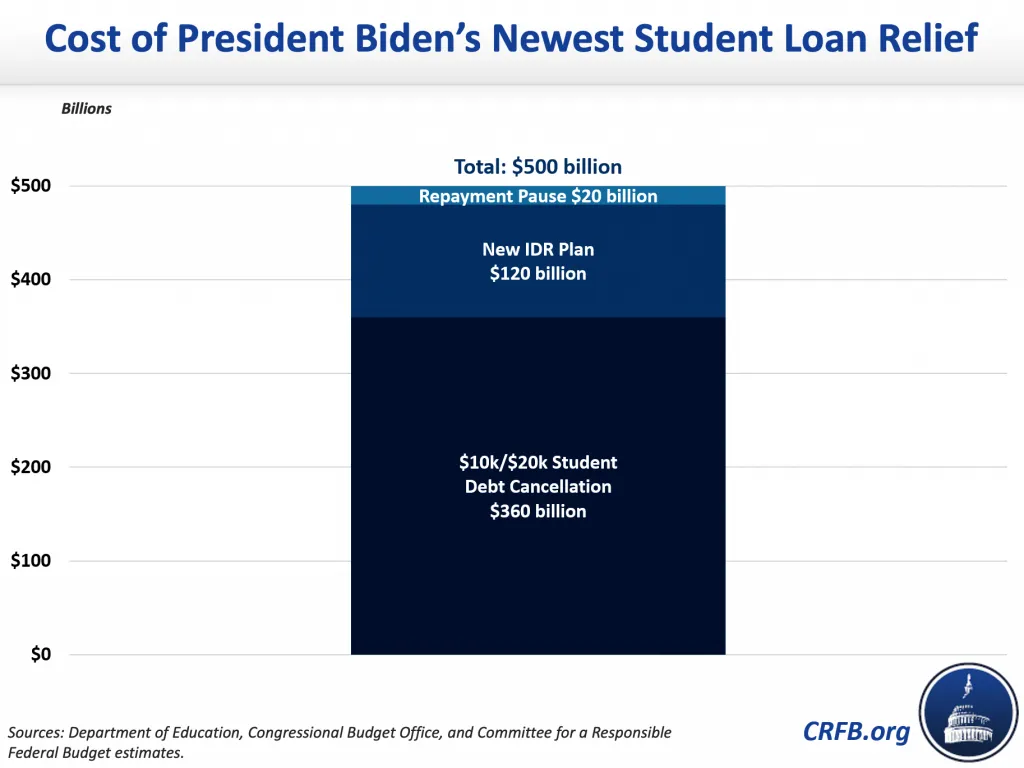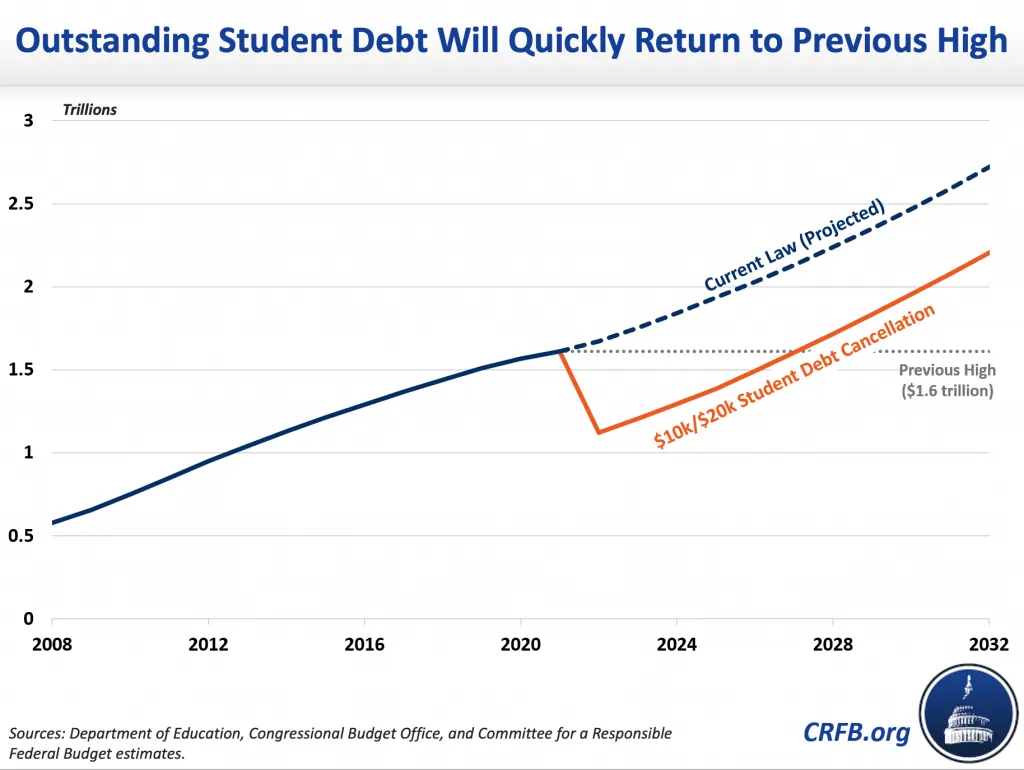New Student Debt Changes Will Cost Half a Trillion Dollars
Note (9/26/2022): The Congressional Budget Office (CBO) has released an estimate that debt cancellation will cost $400 billion. Using new information from CBO and the Biden Administration, we now estimate the total cost of President Biden's announced changes will cost between $500 billion and $650 billion.
President Biden today announced a set of changes to student loans – including cancellation of up to $20,000 for some borrowers – that will cost between $440 billion and $600 billion over the next ten years, with a central estimate of roughly $500 billion. Combined with today’s announcement, the federal government’s actions on student loans since the start of the COVID-19 pandemic have cost roughly $800 billion. Of that amount, roughly $750 billion is due to executive action and regulatory changes made by the Biden Administration.

What Changes Were Announced?
Today’s announcement consisted of broad student debt cancellation, changes to income-driven repayment plans, and what the Administration claims is the final extension of the pause on student loan repayments.
Broad Debt Cancellation
The Biden Administration announced a plan to cancel up to $10,000 of debt for federal student loan holders and up to $20,000 of debt for all federal student loan borrowers who have received a Pell Grant. Only households earning less than $250,000 per year (or $125,000 for an individual) will be eligible. We estimate this will cost between $330 billion and $390 billion, with a central estimate of $360 billion. It will cancel about $525 billion of student debt. The cost of this cancellation is lower than the amount of debt itself because some of that debt was already projected to be forgiven through other forgiveness programs or not paid back in full. Roughly 20 million borrowers are eligible to have their entire debt wiped out, while another roughly 21 million borrowers are eligible to have part of their debt erased.
Income-Driven Repayment
The Biden Administration has also proposed creating a new income-driven repayment (IDR) plan that will make the following changes:
- Raise the amount of income that is excluded from calculations from 150 percent of the federal poverty line to 225 percent. This will lower the amount owed per month for all borrowers in IDR and reduce many lower-income borrowers’ payments to $0.
- Change the percentage owed on “discretionary income” for undergraduate loans to 5 percent, compared to 10 percent currently required in other plans.
- Forgive unpaid interest each month for those whose monthly payments do not cover interest payments. In previous plans, unpaid interest would usually be added to a borrower’s balance each month.
- Forgive the entire balance for those who borrowed less than $12,000 after ten years of repayment, instead of 20 years available in current plans.
We estimate these changes will cost between $90 billion and $190 billion, with a central estimate of $120 billion. The Biden Administration has not announced who is eligible for the plan, making it difficult to pinpoint the actual cost.
Repayment Pause Extension
The Biden Administration also announced an extension of the moratorium on student loan repayments for an additional four months, through the end of December. This will cost an additional $20 billion. We have previously shown that the payment pause is an extremely regressive policy. The Biden Administration says this is the final time the pause will be extended.
How Long Will It Take for Cancelled Debt to Return to Current Levels?
We estimate that roughly half a trillion of federal student loan debt is eligible for cancellation. However, we project that the overall amount of outstanding federal student loan debt will return to $1.6 trillion (its current level) in 2028.

*****
The changes announced today will likely cost more than double the amount saved through the recently passed Inflation Reduction Act, completely eliminating any disinflationary benefit from the bill. We will be releasing an inflation estimate of these student debt changes in a subsequent analysis, but the package is likely to increase inflation by more than a year-long extension of the pause, which we previously estimated would add up to 20 basis points to the Personal Consumption Expenditure inflation rate. The proposed loan changes also do nothing to reduce the amount of borrowing moving forward, setting up a future administration to be called on to cancel debt again.
It is extremely troubling to see the Administration reverse the legislative progress made on deficit reduction. It is long past time that student debt repayments resume, and now it is even more important for policymakers to enact changes that reduce deficits through spending reductions and revenue increases in order to put the national debt on a downward sustainable path.
Updated (8/26/2022): Added the number of borrowers that will benefit from cancellation.

